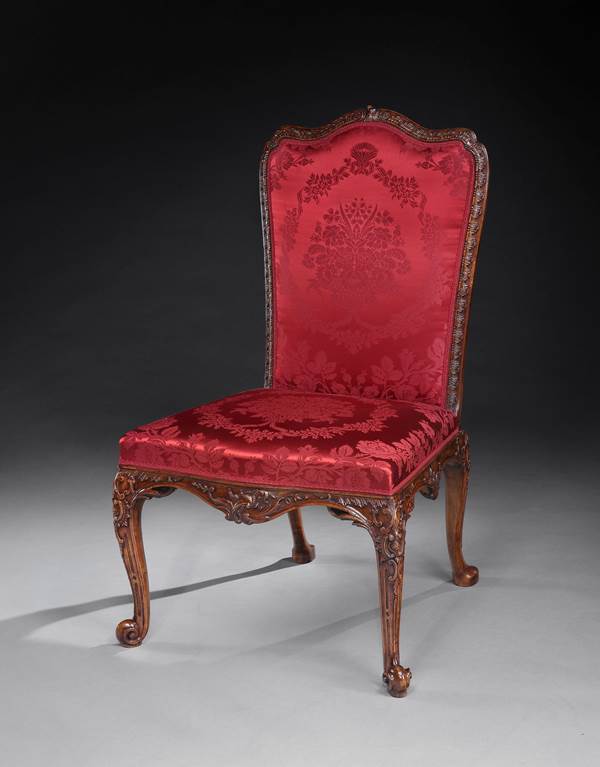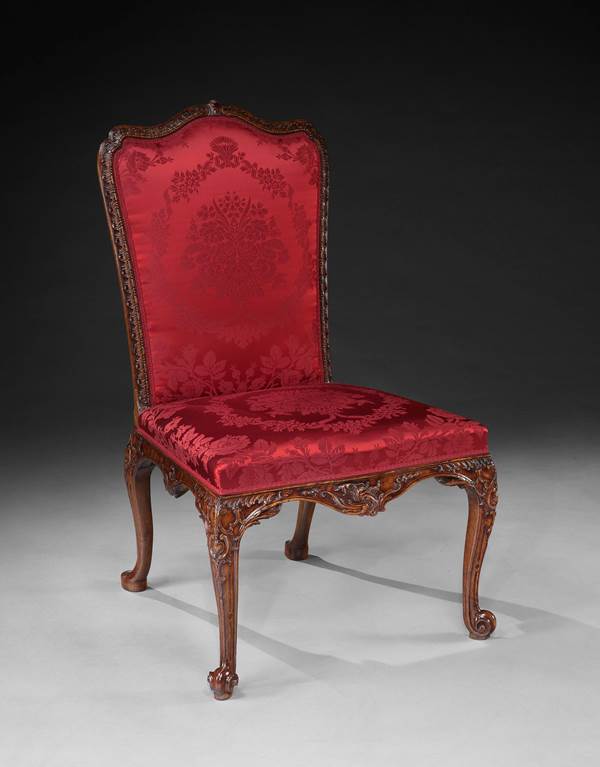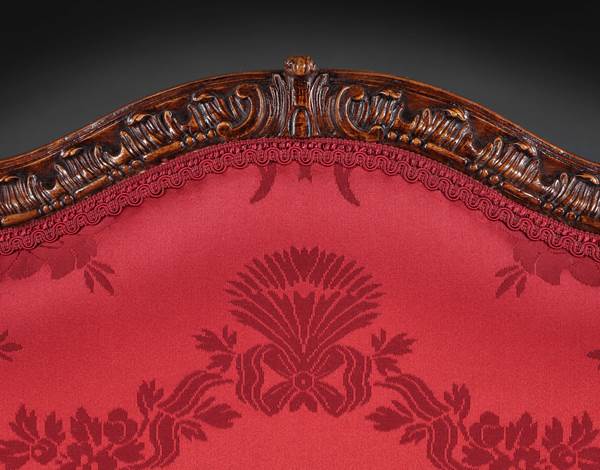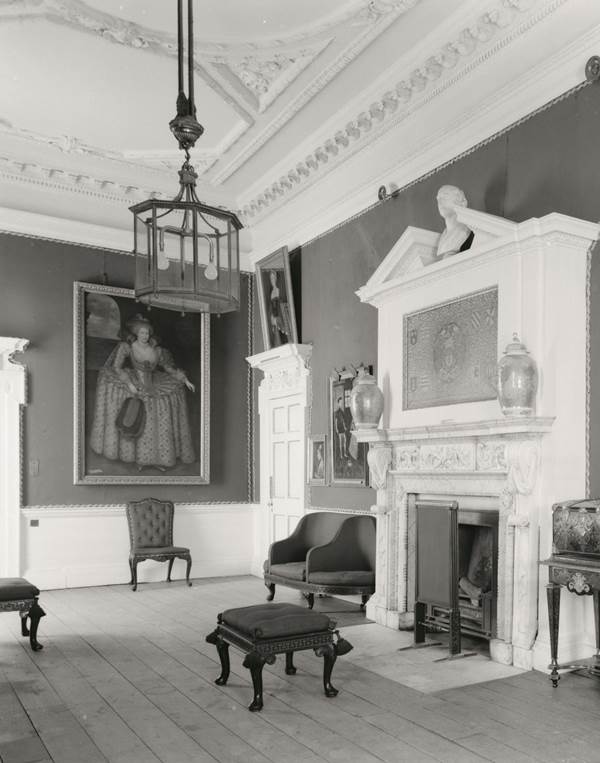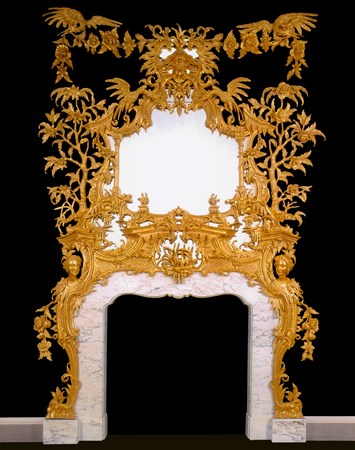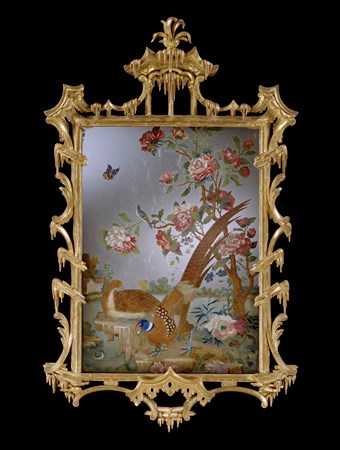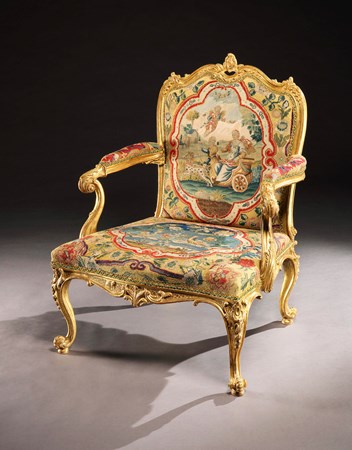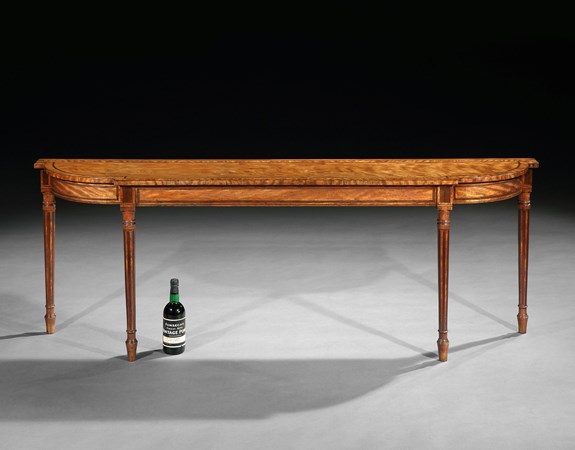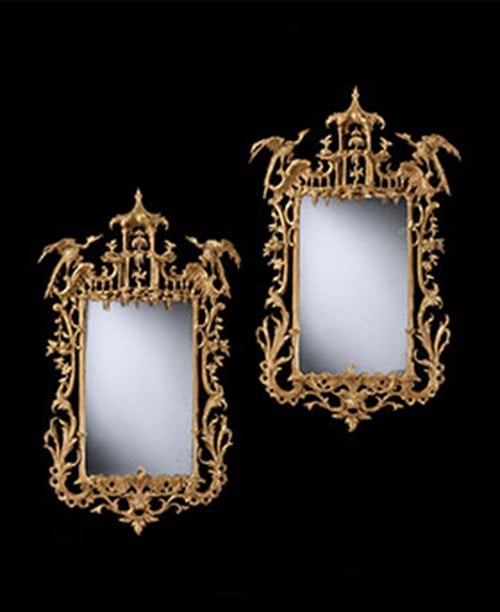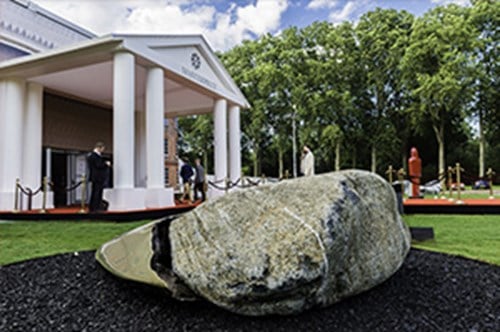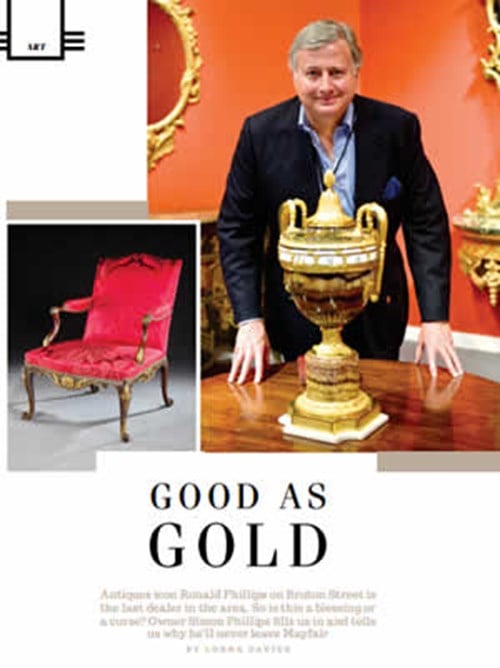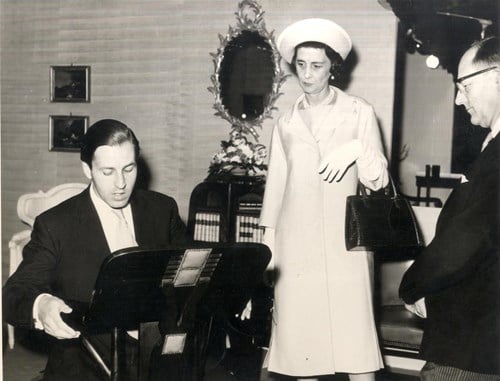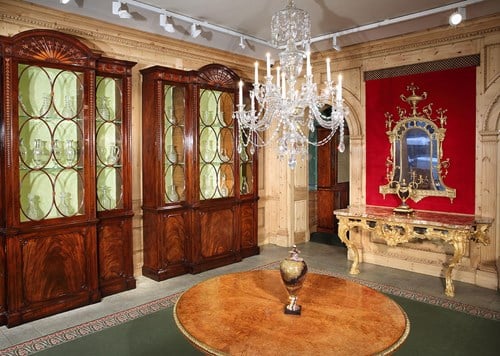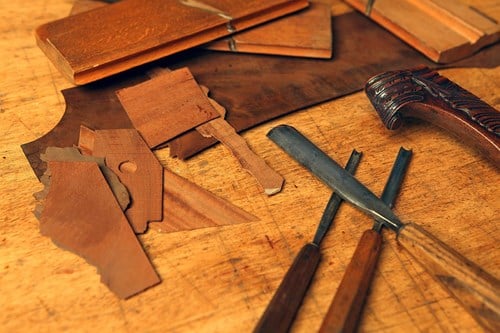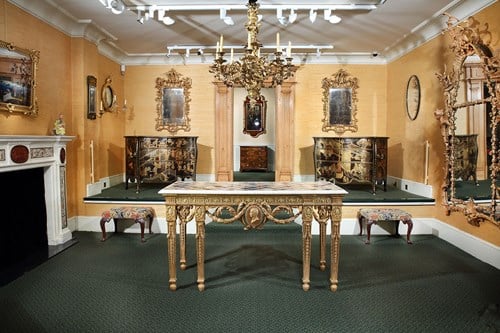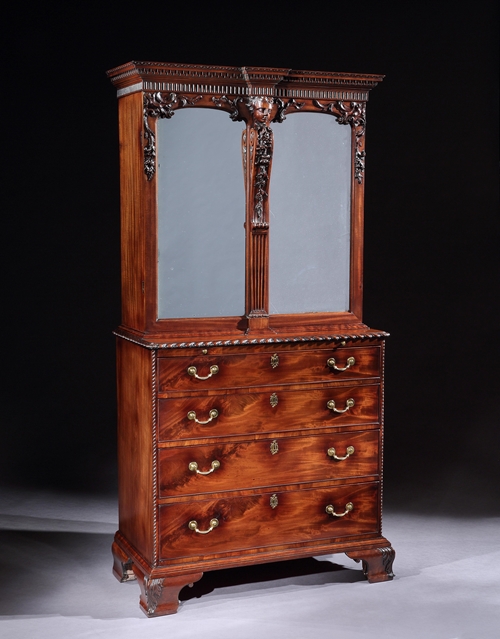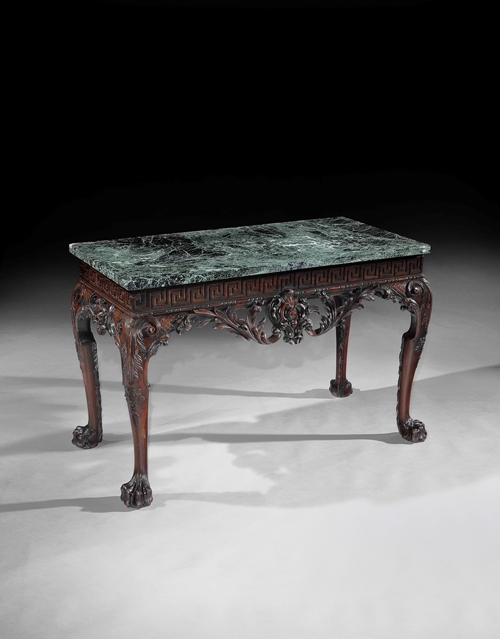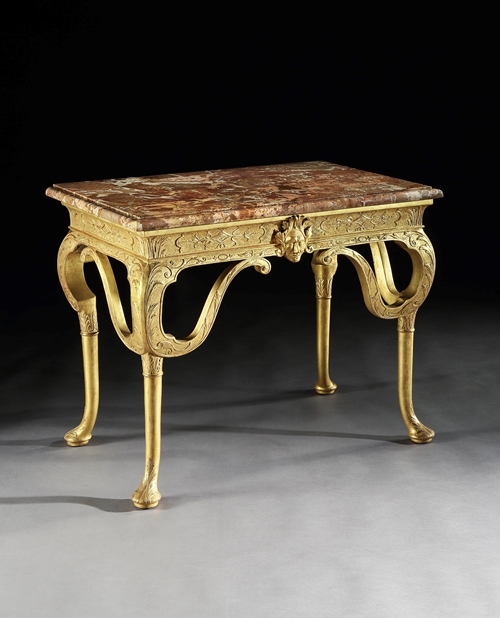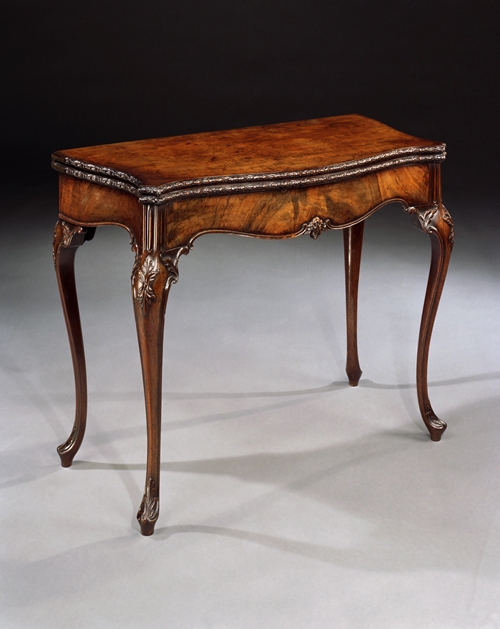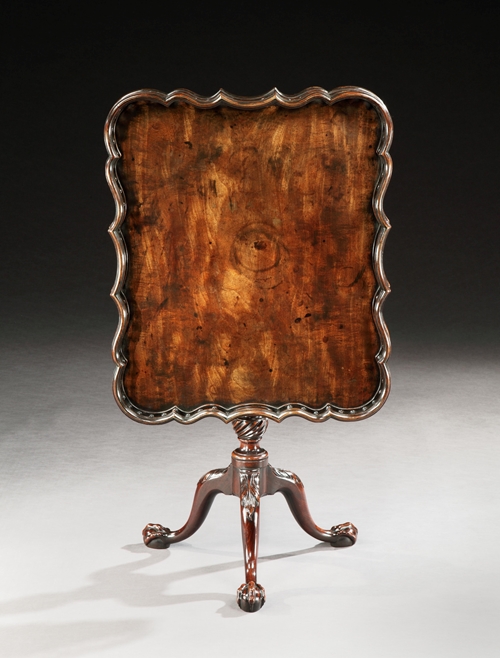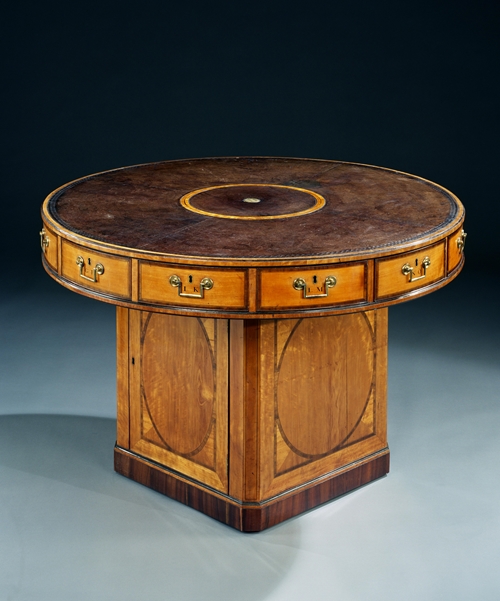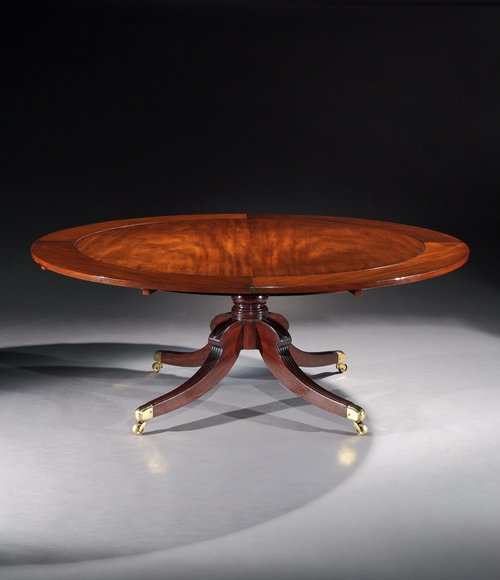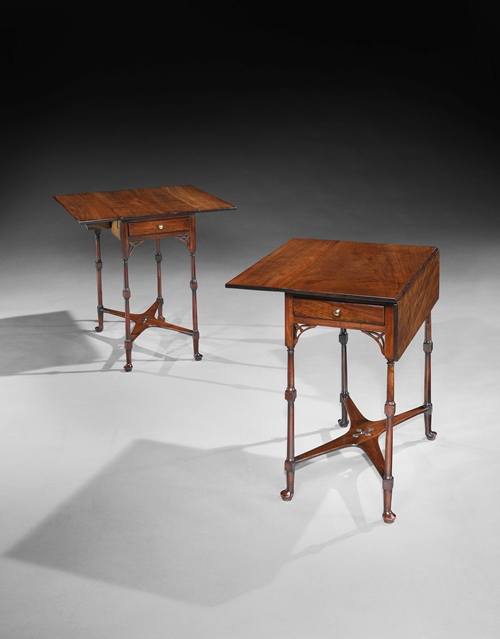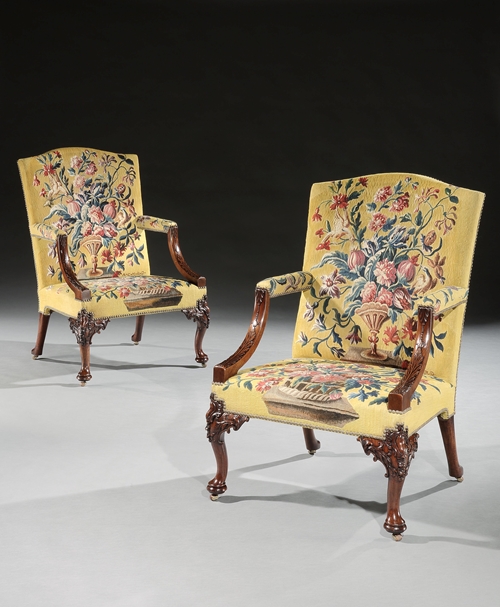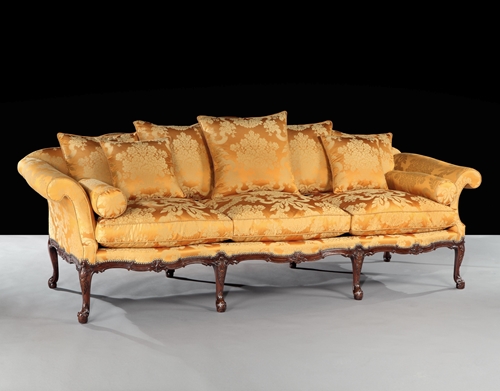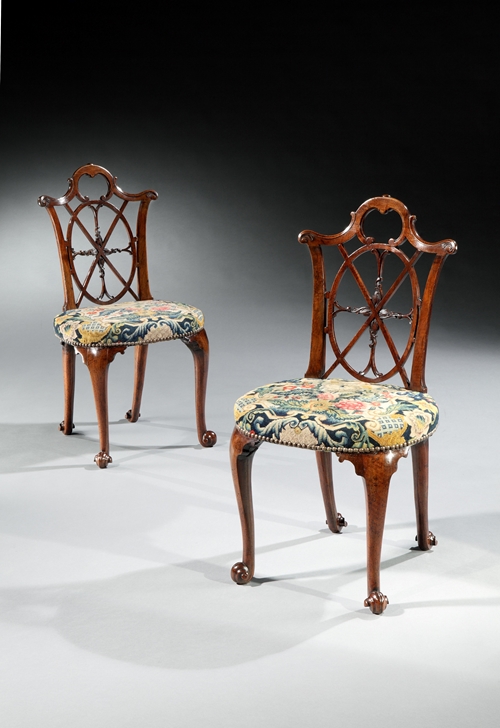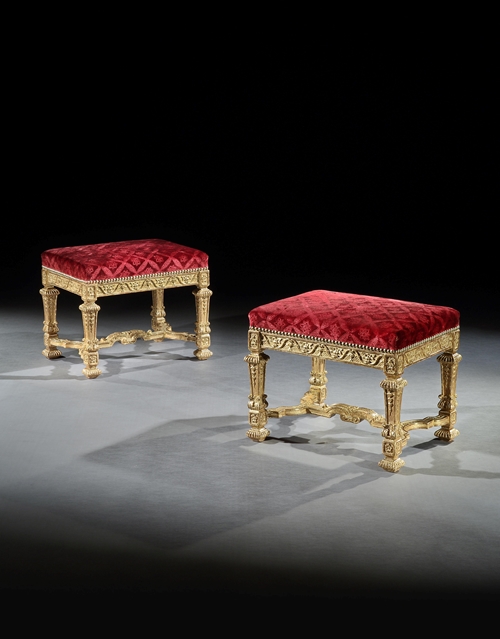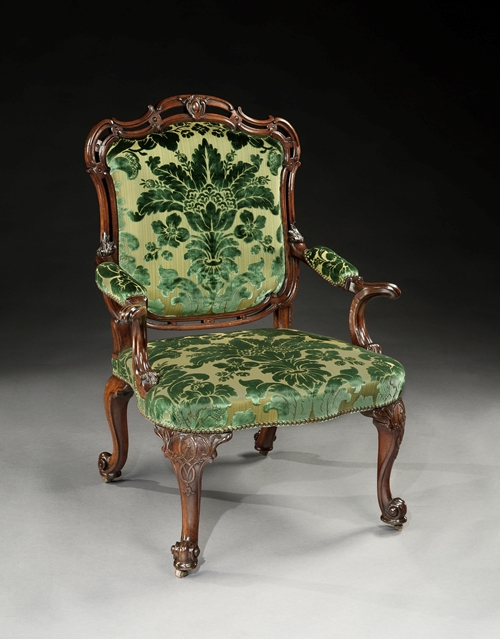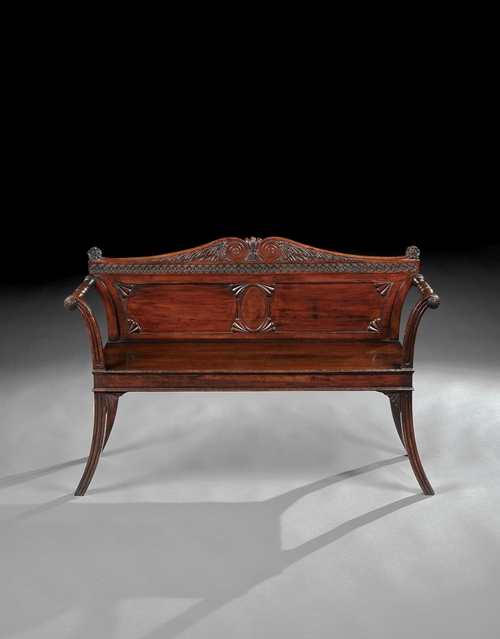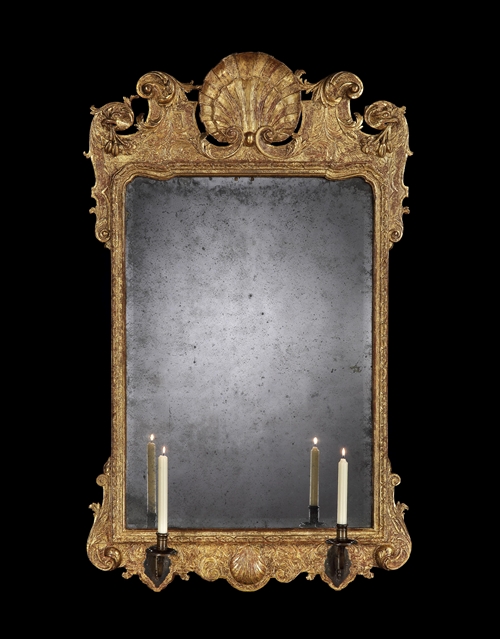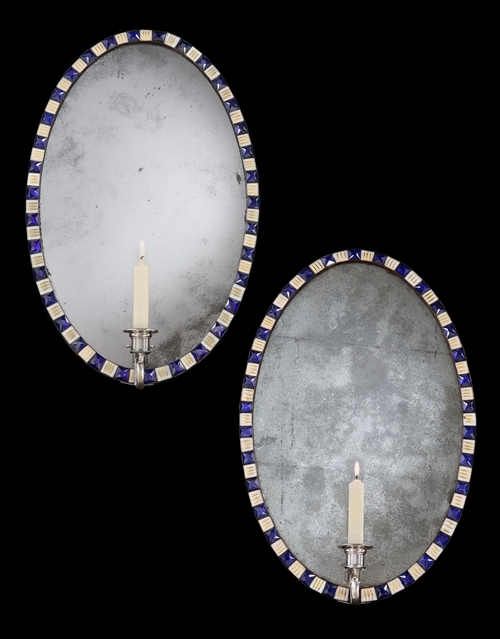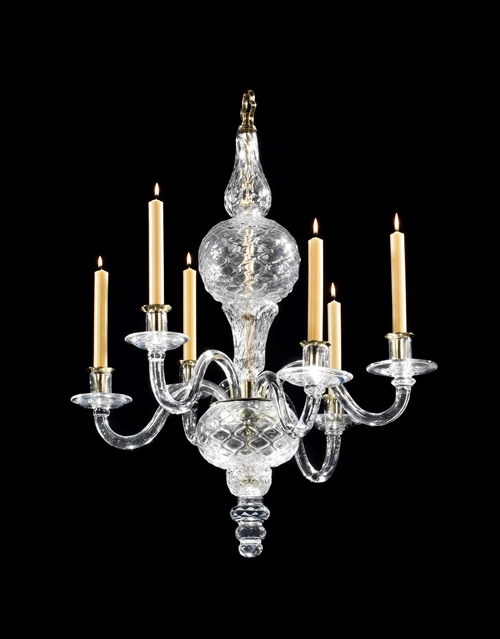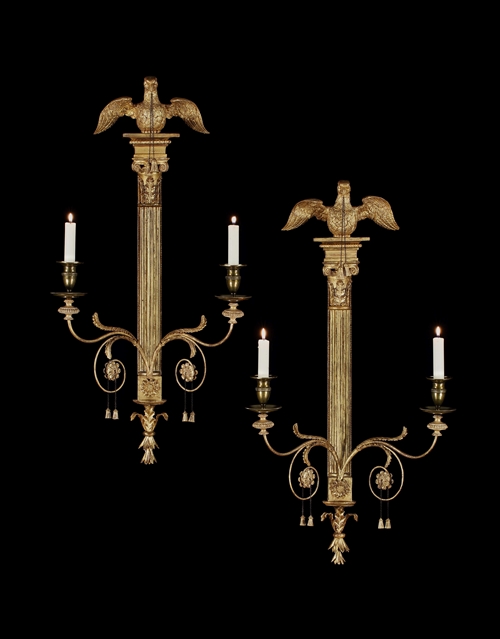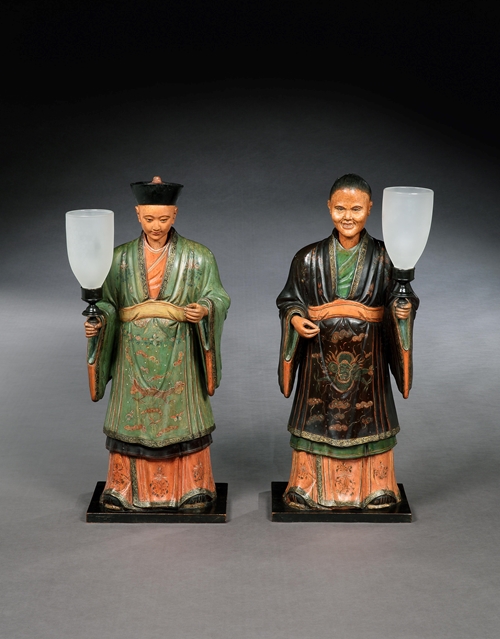A pair of George II walnut side chairs.
The existence of a matching set of chairs at Woburn Abbey has been extremely helpful, but also the cause of some confusion. It is nevertheless reasonably certain that these chairs were part of the same commission.
The choice of walnut for the chairs is highly unusual. From the late 1740s onwards a high tax levy was imposed on timber imported from anywhere other than the British colonies. As a result, mahogany quickly became the principal wood used in English furniture making.
The exceptionally well carved frames suggest a maker of the highest rank. The construction of these chairs and of those now at Woburn is identical in every detail, even down to the corner blocks applied later to the inside of the rails, probably dating from the mid 19th century.
The difference in surface treatment, however, clouds the picture. The Woburn chairs are parcel gilt, while these chairs show no trace of parcel gilding. It is possible that a larger suite was split up at some stage, with some chairs then parcel gilded and some left without gilding. A Country Life photograph taken at Woburn in 1955 shows a chair without gilding.
Keeping track of every suite of chairs supplied to the family over a period of 250 years is virtually impossible, with a series of eleven Dukes and Duchesses and nine major properties (Bedford House, Bloomsbury, London; Houghton House, Bedfordshire; 49 and 112 Pall Mall, and Clarges Street, London; Stratton Park, Hampshire; Micheldever House, Hampshire; Oakley House, Bedfordshire; and Woburn Abbey itself, which was extended by the 4th Duke in the mid 18th century and then half demolished in the 1950s).
The estate papers held at the Bedfordshire Archives Service shed some light on potential cabinet-makers employed by the 4th Duke. Samuel Norman, a highly skilled carver formerly in partnership with James Whittle, supplied ‘to Bedford House, London in 1760/61 - a magnificent set of parcel gilt Virginia Walnut chairs with two elbow chairs, an easy chair and Grand sofa French shaped to match in silk damask at a total cost of £122 s13 d7’. The current chairs, however, are made not of Virginia walnut but of European walnut, probably from France.
John West is a lesser-known cabinet-maker who trained William Ince. West’s business was taken over after his death by Whittle & Norman, and Ince later formed a partnership with John Mayhew. In 1755 John West supplied for the newly refurbished drawing room at Woburn Abbey ten walnut elbow chairs and two sofas upholstered in green damask, followed in the same year by another ten single chairs and two elbow chairs, also made of walnut, with yellow laced seats. The second order of single chairs, or side chairs, appears to be different from the first set in having only the seats upholstered. The first set of armchairs was delivered en suite with one sofa, suggesting upholstery of both seat and back.
Further research may uncover other commissions from the Bedford estates, confirming a maker for the chairs.
Literature:
Geoffrey Beard and Christopher Gilbert, The Dictionary of English Furniture Makers 1660-1840, 1986, p. 928.
Matthew Hirst, ‘The Realisation of a Regency Palace’, Furniture History, 2017, vol. LIII, pp. 225-42.
Illustrated:
Photographed by Country Life at Woburn Abbey, Bedfordshire, 31 March 1955; on display at the end of the Gallery, without any gilding.
Antique Collector, June 1973, p. 114; photographed in the library at Woburn Abbey, with parcel gilding.
Matthew Hirst, ‘The Realisation of a Regency Palace’, Furniture History, 2017, vol. LIII, p. 228, fig. 2; the Country Life image of 1955.
-
Provenance
The 4th Duke of Bedford, for one of the ducal estates and subsequently at Woburn Abbey, Bedfordshire, England;
Alan P. Good: sold at Sotheby’s, London, England, 3 July 1953;
Phillips of Hitchin, Hertfordshire, England;
Private collection, England.
Looking for something similar? YOU MAY ALSO LIKE
YOU HAVE RECENTLY VIEWED ITEMS
Make an enquiry
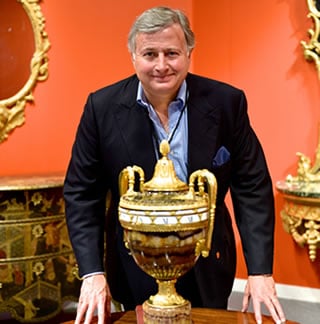
- CAN WE HELP YOU?
- +44 (0)20 7493 2341
- [email protected]
